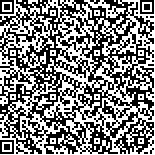下载中心
优秀审稿专家
优秀论文
相关链接
摘要

本研究以哈尔滨野外试验数据为基础,分析了城市表面亮温分布地表测量中,典型目标选择、目标亮温变化以及分类等方面的问题。结果表明,城市典型目标的选择,不仅需用材料特性划分,而且还需考虑阳光与周围环境的变化。此外,城市典型目标的亮温在数值上均随测量时间改变,并且变化比较复杂,需深入研究。在以上实验分析的基础上,建立了一种简单情况下的城市方向亮温模拟模型。模型中,抓住部分建筑区楼房以行结构为主要空间分布特征的特点,将建筑物进行简化,得到了不同观测角度下城市方向亮温的数值。模拟结果显示,方向亮温极化图中出现了条带结构,这与实验结果很吻合,但未能发现热点效应,需要进一步深入研究。
This paper focuses on the methodology for brightness temperature component selection and temporal variations of these component values by an in situ experiment dedicated to urban brightness temperature distribution.Results reveal that the number of typical objects of an urban area and their brightness temperature values vary with time of day due to the complex of urban thermal feature and structures.More thorough analysis is needed in the further research.A modelling study on the variations of directional brightness temperature(DBT) for row-structured building arrays was carried out with the help of the ground observations over urban areas.The model assumes that the DBT is a function of component brightness temperatures and their directional fractions.Their fractions in the scene depend on sun-view geometry and the geometry of buildings.In the simulation of urban areas DBT,the results reveal an evident row-direction-oriented stripe in DBT polar map,where no hot spot appears.As an initial attempt,the research only focus on the simplified conditions,more complicated structure may be considered in the further researches.At last,we compared the solution of model with the experiment solution.The research showed that the solution revealed the phenomenon in experiment to a certain extent.

